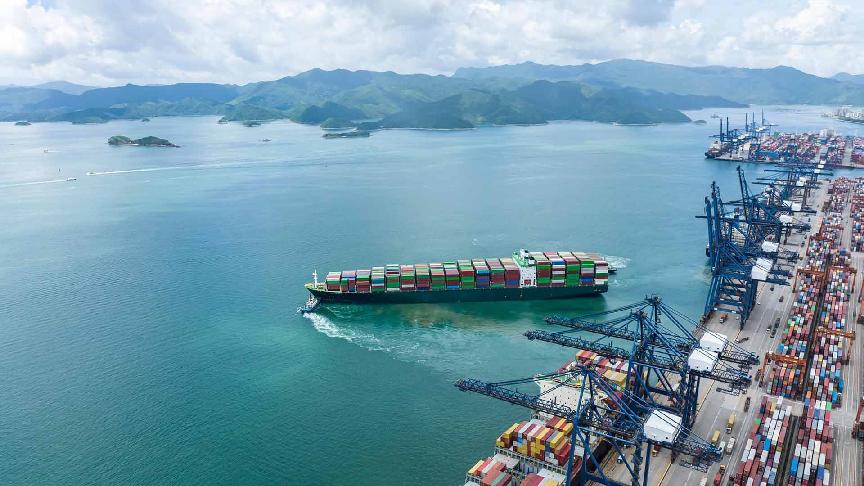10 September (Lloyd's List) - SHIPPERS can expect at least three months of delays and disruption after carriers are finally given the green light for a Red Sea return, according to the world’s second-largest liner operator Maersk.
Speaking exclusively to Lloyd’s List, Johan Sigsgaard, chief product officer of the Danish carrier’s ocean business, said it while it is not clear what a Red Sea reopening would look like at this stage, it was clear that the process would not be as simple as flicking a switch and everything returning as it once was.
“It’s going to be at least three months of settling into the new network, potentially longer, depending on exactly how this this happens,” he said.
The issue confronting Maersk and its fellow carriers will be that the first vessels heading back through the Suez will quickly overtake those still taking the longer route around Africa. The result will effectively see double the amount of vessels arriving in Europe simultaneously, with the potential to overwhelm ports and landside infrastructure.
Sigsgaard admitted that handling potentially double the amount of cargo on the continent would be a “challenge”. But he said Maersk was already “running the details” on such an eventuality.
This, he said, was one of the benefits of the data integration that Maersk can access between its ocean network and regional hub ports, where congestion is most likely to occur.
“The way we prepare for this is to simulate this and then digitally test the scenarios.”
Sigsgaard said that this digital test run gave him confidence on how Maersk would manage the situation, much more so than if just waiting for ships to arrive in Europe en masse before initiating a plan.
He was speaking shortly after Maersk and its new alliance partner Hapag-Lloyd provided an update on its Gemini Cooperation east-west trade offering, which revealed final service maps and a revamped network. Of note was the announcement of two routing options for customers dependent on Red Sea developments, one via the Suez and the other on carriers’ current path around the Cape of Good Hope.
This followed a similar notice on Monday from Mediterranean Shipping Co, as it revealed its own standalone network, which also included a slot sharing agreement on Far East-Europe services with The Alliance members post-Hapag-Lloyd.
Sigsgaard said that customers had begun to get used to having services re-routed via the Cape of Good Hope, and in this sense had become a “bit more fearful” of returning to the more traditional routing via the Suez and the disruption this would bring.
“They [customers] understand that we cannot predict where we will be in four to six months, let alone 12 months from now. What they are asking for is clarity to basically understand how will it work in this scenario [returning to the Red Sea], so they can prepare day and day.
“It’s very important to provide that transparency for customers. They understand that although you cannot be sure at least then they know what to prepare for in case the situation shifts,” he said.
Maersk and Hapag-Lloyd said that it expects to inform customers whether it will commence its Gemini Cooperation in February of next year with its so-called “Trans-Suez” or “Cape of Good Hope Network” by as early as next month.
“It’s a bit hard for me to speculate what the situation will be in October, but the closer we get towards launch date, the more we would have not a ‘50/50’ [probability], but a probability pointing in either direction,” Sigsgaard said.
Not only is Maersk planning for the inauguration of a new alliance and the mammoth task of shifting services and tonnage back through the Suez, the Danish line is also on the cusp of pulling the plug on its 2M partnership with MSC, which will end as Gemini commences.
Again, Sigsgaard was quick to reassure customers in this instance that the culmination of the 2M tie up, a scenario Maersk is well versed in, is “manageable”.
“I think we have a relatively straightforward plan,” he said. “When we phased into 2M and out of what he had previously and so on, this is something we had done before, so I’m not too worried on that part.”







